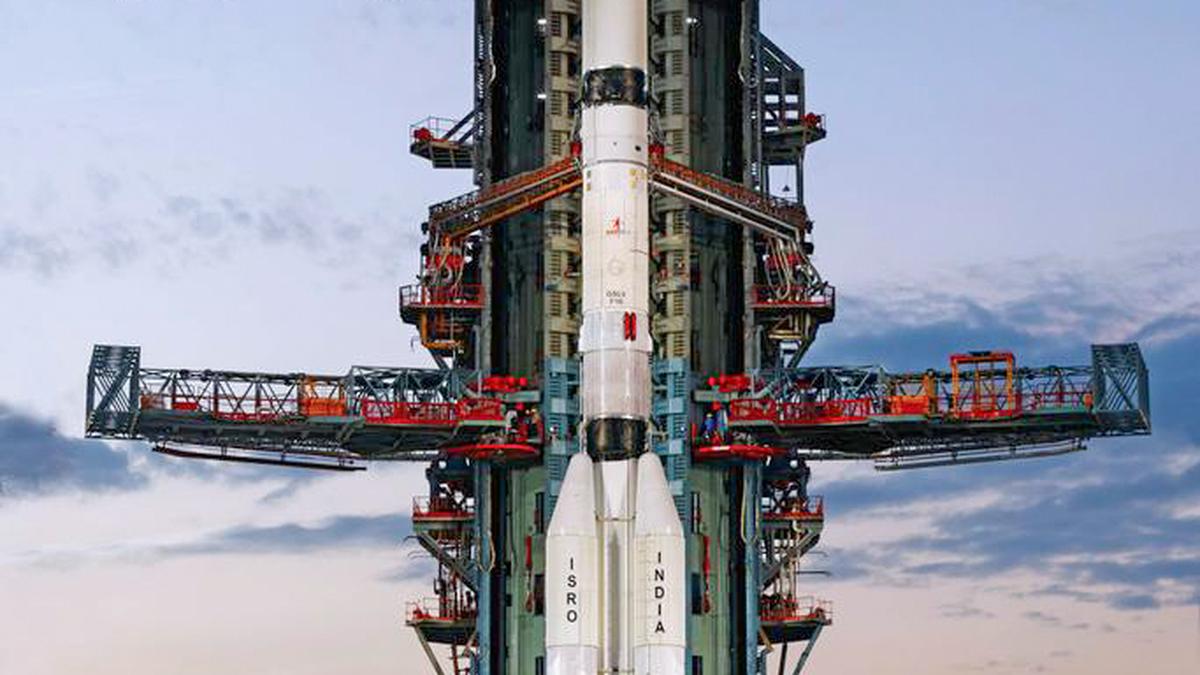A view of the NASA-ISRO’s joint satellite NISAR following its launch on July 30th at 5:40 p.m., in Sriharikota on July 28, 2025.
| Photo Credit: X/@isro via ANI Photo
Ahead of the launch of the NASA-ISRO Synthetic Aperture Radar (NISAR) satellite scheduled for July 30, the ISRO on Monday (July 28, 2025) announced that the satellite had been mounted on a geosynchronous satellite launch vehicle (GSLV), and all systems of the rocket had been checked.
After lifting off from the second launch pad of the Satish Dhawan Space Centre in Sriharikota at 5.40 p.m. on July 30, the GSLV-F16 rocket will inject the NISAR satellite into a 743-km sun-synchronous orbit.
Explained | What are ISRO and NASA aiming to achieve with the NISAR satellite?
The NISAR satellite, weighing 2,392 kg, is a unique Earth observation satellite. It will be the first satellite to observe the Earth with a dual-frequency Synthetic Aperture Radar (SAR) — NASA’s L-band and ISRO’s S-band — both using NASA’s 12-metre unfurlable mesh reflector antenna, integrated with ISRO’s modified I3K satellite bus.
With a mission life of five years, NISAR will observe earth with a swathe of 242 km and high spatial resolution, using SweepSAR technology for the first time.
Day-and-night data
“The satellite will scan the entire globe and provide all-weather, day-and-night data at 12-day intervals, and enable a wide range of applications. NISAR can detect even small changes in the earth’s surface, such as ground deformation, ice sheet movement, and vegetation dynamics. Further applications include sea ice classification, ship detection, shoreline monitoring, storm characterisation, changes in soil moisture, mapping and monitoring of surface water resources, and disaster response,” the ISRO said.
The NISAR mission is broadly classified into different phases – launch, deployment, commissioning and science phases.
In the launch phase, the satellite will be launched by the GSLV-F16 launch vehicle, while in the deployment phase, a 12-metre reflector antenna will be deployed in orbit nine metres away from the satellite by a complex multistage deployable boom. This will be followed by the commissioning phase.
“The first 90 days after launch will be dedicated to commissioning, or in-orbit checkout, the objective of which is to prepare the observatory for science operations. Commissioning is divided into sub-phases of initial checks and calibrations of mainframe elements followed by JPL engineering payload and instrument checkout,” ISRO said.
The final science operations phase begins at the end of commissioning and extends till the end of NISAR’s five-year mission life.
“During this phase, the science orbit will be maintained via regular manoeuvres, scheduled to avoid or minimise conflicts with science observations. Extensive calibration and validation activities will take place,” ISRO said.
Published – July 28, 2025 11:25 pm IST
